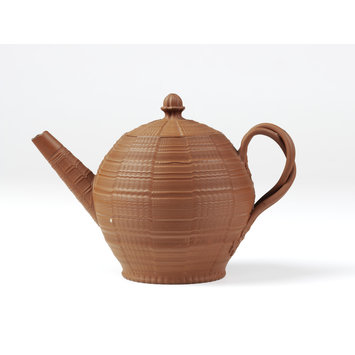 |
| Andrew's Worcester Jug found Mudlarking |
These 300+ year old Bartmann beards seem to be coming my way at the moment. What appears at first glance a pottery accident are intentional daubs of cobalt blue. Satisfyingly I came across a match in the Museum of London's collection, I still don't quite 'get' the effect.
 |
| Mudlarking Find: Bartmann Beard with splashes of blue glaze |
 |
| Frechen stoneware bottle 15551-1700 (Museum of London) |
The first is 9cm tall. The potter has decorated the vessel with ribbing as they pulled up the clay on the wheel. The flared base has been lightly thumbed to decorate, a more restrained version of the German Raeren and Siegburg jugs and beakers from the 14th - 19th C.The straight sides are confusing me somewhat, as these old jugs and drinking vessels tend to be bulbous, is it a tumbler? Covered in a rather handsome brown mottled glaze. Rather messy brush stokes hidden on the base make it all rather human, suddenly collapsing the centuries.
 |
| Mudlarking Find stoneware beaker? |
 |
| Mudlarking Find: Stoneware handle |
 |
| Mudlarking Find: Stoneware pot handle
A few other pieces I thought were worth putting up are a delftware swirl and an earthenware pottery lid with small white relief flowers
|
 |
| Mudlarking Find: Delftware swirl |
 |
| Mudlarking Find: Small earthenware lid
Update
I came across the picture below on this pinterest site, apart from the dog it's exactly the same, from a Staffordshire glazed redware armorial teapot circa 1740 - 1745, with white slip sprigs. Lastly my first butterflies, one porcelain courtesy of Brian's sharp eyes, strangely a rather finely drawn Worcester insect and a transfer swift and a nice chunk of incised Westerwald fired up with cobalt blue below. |
 |
| Mudlarking Finds: Birds Butterflies and insect. |
 |
| Mudlarking Find: Incised Westerwald |

















